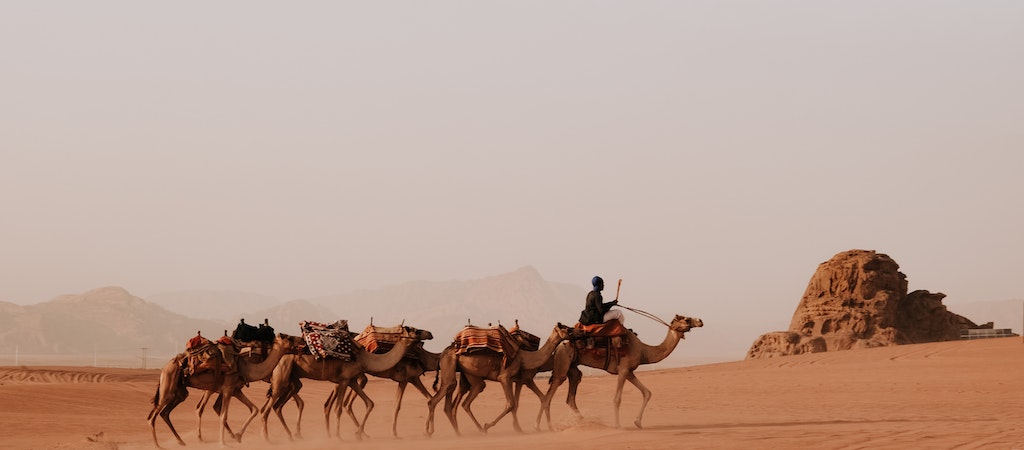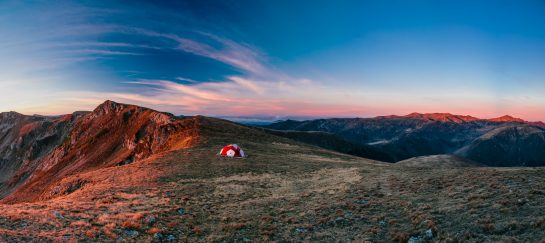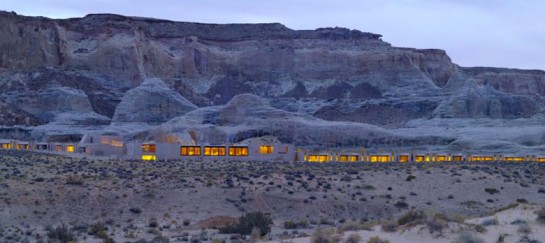
The Mysteries of Petra: 10 attractions you shouldn’t Miss
The city of Petra is shrouded in mystery, myths, and legends. Petra is a UNESCO-listed wonder built in the Jordanian desert by the Nabataean people over 2000 years ago. Today it is protected within the Petra Archaeological Park. The Nabataean capital was an important stop for camel caravans on the route from the Arabian Peninsula to the Mediterranean. But what makes Petra truly unique is that the Nabataeans carved their buildings out of the desert’s red-hued sandstone cliffs creating cave-like chambers and elaborate facades. Eventually, time moved on, and a succession of civilizations inhabited Petra each leaving its mark. Here are the top 10 must-see Petra attractions, although there are many more to explore and discover.
1. The Siq
The first Petra attraction you’ll come across is the Siq. It is a 1.2 km-long canyon, a narrow route flanked by soaring cliffs. The Siq is the entrance to Petra, and all visitors pass through this dramatic gateway to the city. At the entrance to the Siq look out for the remains of the old city gates and the carved water channels in the stone. The narrow pathway opens up at the end into Petra, and the first thing you will see is the massive, and breathtaking facade of the Treasury.
2. The Petra Treasury
If you’ve only ever seen one picture of Petra, it will have been of the Treasury, a massive, intricately carved facade of one of the most impressive structures. You’ll see the Treasury as you enter Petra through the Siq. One of the most Instagrammable pics at Petra is the view of the Treasury seen between the narrow opening of the Siq. But although it is called the Treasury (Al-Khazneh) it was not a treasury at all. We’re not exactly sure what the Treasury was used for but it may have been a temple or a burial site. It got its name because the local Bedouins who came across the awe-inspiring structure believed that it held riches. For the best shot of the Treasury from above, follow the steps up to the top of the cliff opposite the Treasury.
3. The Roman Theater
Not everyone gets to see the Roman Theater because it is at the far end of Petra. If you’ve taken one of the tours to Petra from Jerusalem and you want to see the Roman Theater then you should consider taking the two-day tour, when you can explore independently on the second day. This 1st-century AD Nabataean theater could hold 3,000 spectators. The Romans expanded on the original structure so that it could accommodate up to 7000 in the audience! .
4. Temple of Qasr al-Bint
Originally built in the 1st century BC, it was once a Nabataean temple. This site is one of Petra’s best-preserved free-standing structures. Qasr al-Bint (Palace of Pharaoh’s Daughter) is steeped in legend. Pharaoh’s daughter had two suitors and to choose between them she set them a task to bring water to her home. Each suitor diverted a stream to flow to the palace, and they completed the task at the same time. The princess chose the more modest of the suitors. The temple was once highly decorated including stucco walls inside and out.
5. Ad-Deir, The Petra Monastery
If you’re the adventurous type or if you like a challenge, you can take a hike to Al Deir Monastery. It is well-preserved and one of the largest structures in Petra. It was built around the mid-first century AD. Various civilizations have used it over the past 2000 years and inside you can see two benches carved into the side walls. Ad-Deir got its name, the “Monastery” because it was used as a Christian chapel during the Byzantine era. See the crosses carved into the rear wall.
6. The Colonaded Street
Every visitor to Petra walks up the Colonnaded Street which is lined by most of the city’s top attractions. This street was created by the Nabataeans and redesigned during the Roman era. It would have been the main shopping street, and at one point you can see steps leading up to an area that would have been the market. At the end of the road, you will reach the Temple of Qasr al-Bint
7. The Royal Tombs
This is the site where many of Petra’s rich and powerful were buried. It was originally built for the Nabataean King Malichus II in the 1st century AD and turned into a church about 400 years later. Then used again as a tomb in the years that followed. The Royal Tombs are a series of cave tombs carved into the western slope of the Jabal al-Khubtha rockface. Among them are the Silk Tomb, named for its iridescent colors, the two-story Urn Tomb, the Palace Tomb, and the Corinthian Tomb. The best time of day for taking photos of the Royal Tombs is late afternoon when the colorful stone appears to glow in the fading sunlight.
8. The Byzantine Churches
Get a better perspective of how the city has been home to several civilizations by including some of the structures from other eras in your tour of Petra. There are the remains of three Byzantine churches – the Ridge Church, built in the 3rd-4th century AD of Nabataean and Roman materials; the Byzantine Church of Petra, which is the best of the three with well-preserved mosaics, and the Blue Chapel with four blue Egyptian granite columns.
9. The Farsa Valley
This location in Petra is included in this “top Petra Attractions” list because it will truly give you a feeling that you have stepped back in time. It is not on the well-trodden tourist route and requires a little bit more time to reach and explore. Farsa Valley is on the western side of Mount Altar. It would have been a pilgrimage route to the High Place of Sacrifice, and the valley is full of tombs (including the Renaissance Tomb), but not full of tourists. This is an excellent place to see the remains of Petra’s ancient water system including the carved water channels, stone tanks, and large reservoir.
10. Petra by Night
This attraction is not a structure, but rather an event. A chilling, and moving experience. It is a magical event when Petra is lit up with thousands of candles. The show tickets cannot be bought in advance, and you need a regular daytime entrance ticket to buy the Petra by Night ticket at the Visitors Center. Stay overnight in Jordan (Wadi Musa), and see this special show on a Monday, Wednesday, or Thursday at 20:30. If you are on a two-day tour such as one of the Bein Harim Israel Tours your tour guide will be able to give you more information about the show.
Daily Newsletter
Subscribe to Jebiga for a dose of the best in gear, design, rides, tech and adventure.






